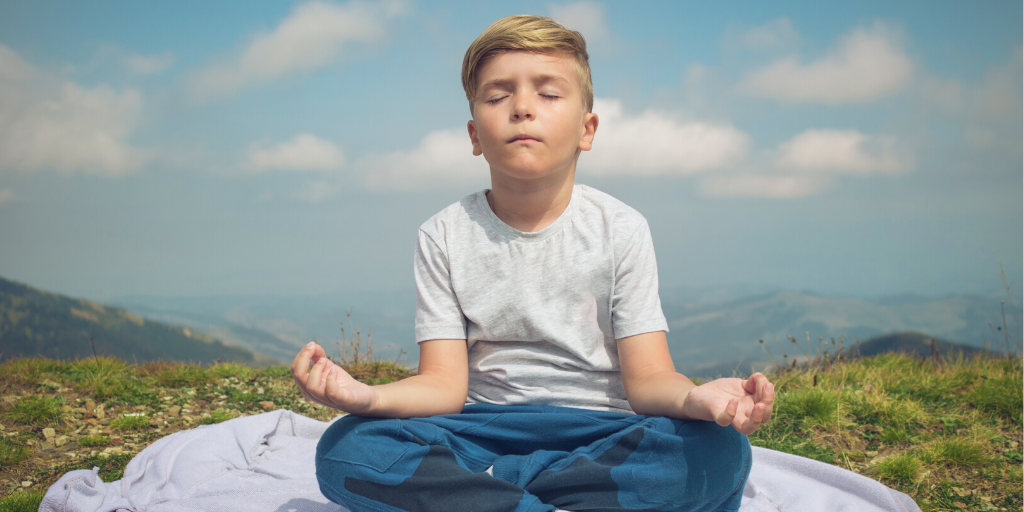
Looking to add family fun to winter break? Here are some activities that combine play with relaxation, and reflection with emotion regulation learning. A few activities focus on down-regulation and calming, which is great for feeling calm and more resilient in the face of stressors and frustrations. Other activities get everyone’s heart rates up, which is a good thing for boosting mood and energy levels! Emotion regulation is all about building that mind-body awareness and being able to manage your emotions, regardless of what they are.
Fun with up-regulation
Play with your Food
There are many benefits to cooking with kids. It can help kids build manual dexterity, develop math skills, and exercise mindfulness about food and eating. It can also be an exercise in practicing emotion regulation. Working together and following a recipe can bring everyone’s heart rates up, just from the sheer fun. Cooking can also raise childrens’ heart rates in response to performance demands — trying to get the recipe right and working hard to make something that tastes good. Cooking with kids can raise adults’’ heart rates too — the chaos! The mess!
With many different things going on, family cooking can get pretty wild. Notice and enjoy the up-regulation. If it starts to feel like too much, take a mindful minute together and try a calming strategy like deep breathing, progressive muscle relaxation, crossing the midline, or tracing.
Field Trip!
Sometimes kids struggle with the loss of structure during school breaks. Building in mini-field trips can introduce helpful structure to days off, and provide children with opportunities to balance the typical down-regulating rest & relaxation of school break with up-regulation moments of engaging in fun and interesting things.
Plan visits to the park – the park you usually go to, or one that you don’t get to visit as much during the school year. Go to a museum- art museum, science museum, children’s museum, etc. – check your local library to see if they offer free passes during school break. Go watch a construction site or roadwork in action. Shop together for inexpensive school supplies to use back in school after the break. Visit a “paint your own pottery” workshop, or bring art supplies to a place with a good view and draw or paint what you see.
A field trip can get kids in the red for many reasons – the fun of the adventure, the newness, the change in routine, the transition away from or back to home. Try to anticipate things that might trigger overwhelming amounts of up-regulation for kids, and make a plan that includes breaks and opportunities to feel grounded – a few minutes of back-to-back breathing, a snack break, a time to reflect on what’s happening today and what’s interesting about it.
Get Moving!
Getting exercise supports physical and mental health. It also is a great way to practice experiencing and tolerating up-regulation. Some children will automatically be excited to exercise, in which case you can suggest a walk, a jog, swimming laps together, etc. Some kids need physical activities to be framed as fun and games. You can do that by making your walk a nature walk, opting for soccer or whiffle ball instead of jogging, creating a timed scavenger hunt, an obstacle course, a yard games Olympics, or something else new and creative.
To capitalize on the emotion regulation learning opportunities in physical activities, take a moment to notice what your bodies feel like when your heart rates are high. Decide together at regular intervals whether you would like to continue to keep heart rates high for a while longer (keep exercising / keep moving) or decrease your heart rate for a bit (slow down, or stop and rest, and take a few deep breaths).
Fun with Down-Regulation
Spa Day
Self-care can help kids expand their personal repertoire of calming activities. Give each other back rubs or mani-pedis. Use face masks or hair masks together. Put on some mellow music. Light candles. Fill the room with relaxing steam from the shower or a diffuser and essential oils. Lie down on soft, cozy blankets, and set cucumber slices over your eyes. Reflect on what it feels like to be totally relaxed. Talk about the connections between muscle relaxation and heart rate.
Book Club
Have everyone – kids & adults – do a power hour of reading. Read favorite old books and stories again, or try something new. Next, set a timer for 20 minutes or so, and have each person take that time to draw something about their book that they would like to share, then take turns sharing your drawings with each other.
Alternatively, have everyone read the same book or story- together, or separately. Then talk about the book together. You can focus on what happened in the book, and how the characters in the book might have felt when things happened or how they resolved conflicts. What kinds of things would help the characters in the book raise or lower their heart rate?
Reflect
At a quiet time during the day, or when you’re out together on a walk, spend some time reflecting. What went well at school or work in the months leading up to the break? What could have gone better? What are some things you might like to do more of, continue with, or do less of in the weeks and months after the break? Or consider the same types of questions, focusing on just today, or on family traditions around this time of year, or shared situations or memories that might benefit from a bit of reflection.
Gratitude Activities
Winter Break can be a good time to get into a regular gratitude routine with kids. Pick a time of the day, or a day of the week, when you’re going to take turns naming things you’re grateful for. Having a bit more time than usual during break might also give you chances to turn your gratitude activities into a creative project. You can decorate a gratitude box, where people can drop slips of paper naming or drawing things they’re grateful for – then you can read them out loud every once in a while. Or you can construct a gratitude tree, which can grow over time with leaves made of grateful words or drawings. As you share your gratitude with each other, take a few deep breaths and a mindful minute, to appreciate each other and to be together in the present moment.
Note from Mightier Clinicians
School breaks can be a wonderful time to practice emotion regulation together. At Mightier, we are constantly working to help families improve their mental health, while also having fun.
Learn more about how Mightier helps kids manage their emotions. >>

















